May 2023

Bed bug treatments in cases of pregnancies and newborn babies
Expecting mothers rightfully think about the health of their unborn child and prevent certain food and substances which also include pest control sprays and solutions. DIY methods can definitely be a concern due to the likelihood of ingesting pesticides that can be harmful to the expecting mother and their baby, like exposure to other chemicals. Scheduling a pest control while pregnant does not put the health of the mother or the baby at risk because the treatment is applied by a professional who is expected to handle solutions professionally and liable to conduct a risk assessment and share information about the treatment processes, and the do’s and don’t within safety guidelines.
If you realise you have been exposed to pesticides, nothing to worry about. According to a research conducted by the American Pregnancy Association (2021) ‘real risk comes from long-term or intense exposure’. It is however important to note, the level of exposure to pesticides that are safe for pregnancy and breast-feeding is still unknown as well as definite conclusion as to whether birth defects or miscarriage is caused by exposure to pesticides (National Institute for Occupational Safety and Health).

Combined heat and spray treatments against bed bugs are preferable in cases of pregnancies or newly born babies. In comparison, spray only or heat only treatments usually require multiple visits until the complete removal of the bed bugs.
Heat methods
The two main heat methods in bed bug control are dry steam and hot air. Both combine perfectly well with the professional insecticide spray and allow us to achieve complete bed bug extermination with less visits, respectively less chemicals used and less money spent. The greatest benefit of the heat methods is that they eliminate adult bed bugs (tougher than the newly hatched ones) and bed bug eggs fairly quickly during the treatment itself. This cannot be achieved through the insecticide’s residue that poisons the bed bugs slowly over time.
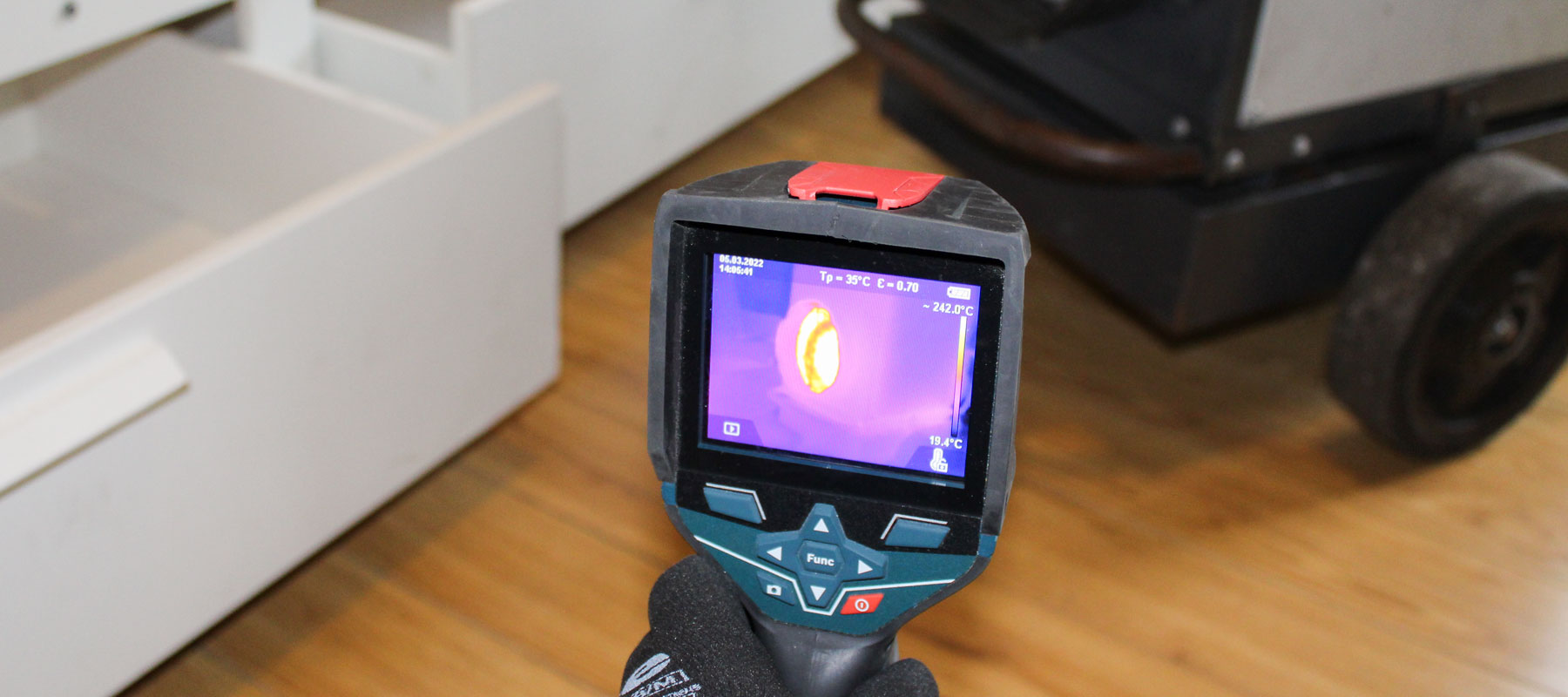
Insecticides
Professional pest technicians are responsible (under the COSHH legislation) to eliminate or reduce the exposure to pesticides as much as possible and use alternative non-toxic methods, such as hot air and dry steam methods. It is preferred to avoid pesticides in your home all together, especially during the first trimester as no substance can be considered 100% safe. Always seek professional advice if you are not sure how to handle pest infestation.
Professional insecticides are formulated in a way that residue, which is a microscopic dust, sticks to the surfaces extremely well after application. This way the residue from insecticides is not airborne after treatment, making children and pets safe after treatment. Overtime, the professional acting ingredients start breaking down proactively and become safer due to susceptibility to sunlight (photolysis).
References:
https://americanpregnancy.org/healthy-pregnancy/is-it-safe/pesticides-during-pregnancy/
https://www.cdc.gov/niosh/topics/repro/pesticides.html
Author:
Bed Bug Hunters & Prime Pest Control Team
January 2023

Bed bugs don’t discriminate
Common misconceptions about bed bugs
The bloodsucking insect has become notorious in the past two decades, causing people to fear sleeping in their own beds, throwing furniture away or stripping down the carpets. Just the thought of having bed bugs at home can make you feel distressed and worried. The reason for this article is the increased anxiety of bed bugs we hear from customers, and listening to the detrimental impact even the thought of having bed bugs causes individuals and their close ones.
From experience we know that there are many scenarios when it comes to an infestation, although there are some patterns about bed bugs’ behaviour that do not change. Sometimes it’s a flatmate or a family member that has unknowingly introduced the insect, suddenly affecting the other people living in the property. Would you want to call them out and tell them they brought unwanted visitors to your property, or would you beat yourself up for why the bed bugs chose your property in the first place? Neither of these actually matter because everyone is a candidate for hosting bed bugs within their property regardless of the postcode or the size of the property. Truth of the matter is, bed bugs don’t discriminate.
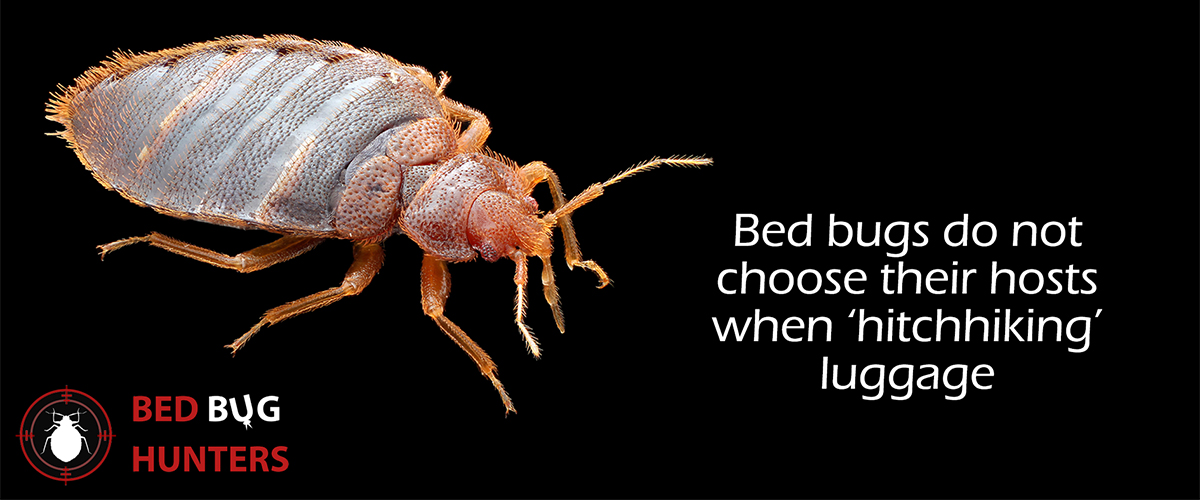
One thing is for sure – bed bugs have nothing to do with cleanliness, although this is a common misconception. Bed bugs do not discriminate, and they would take any chance to get a bite or free transport to a desired destination. It’s actually true that bed bugs do not choose their hosts when ‘hitchhiking’ luggage, clothes or furniture, hence nobody should be ashamed or feel embarrassed if they find bed bugs in their property.
The most common misconceptions about bed bug infestation are:
- Bed bugs like dirty environments and infest dirty houses
- Bed bugs carry disease
- Bed bug bites always cause a reaction/spot
- Bed bugs can jump or fly from one location to another
- Bed bugs only like warm places and hatch very quickly

With over 10 years in service, Bed Bug Hunters have seen cases where we attend an inspection for suspected bed bugs and don’t find any trace or sign of infestation. After speaking to the residents we find they either have had a previous experience with bed bugs, or have a generalised misconception about insects causing signs of emotional and physical distress. Bed bugs are actually very intelligent when it comes to detecting areas to settle in, detecting residue in an attempt to hide or move to untreated areas for survival, and knowing when to come out for a bite due to exposed skin and less movement, such as when we are sleeping or cosied up on the sofa and watching a movie.
Bed bugs are just insects.

Understanding your emotional reactions and fears
Fear of contamination
Fear of contamination can take over daily life and make the simplest tasks unbearable. Constantly thinking about the ‘what if’ where one can start having recurring thoughts and repetitive behaviours that cannot be controlled. Having fear of contamination includes fear of germs, disease and dirt and can be characterised with 2 components; obsessions and compulsions.
- Obsessions: fear of catching a bed bug, bed bug infestation without encountering one in the property, feeling unclean
- Compulsions: excessive cleaning rituals, avoiding areas of the house that is thought to be infested, disinfecting regularly
It can be a very paralysing and an exhausting experience which can also create the feeling of helplessness and question or blaming oneself. In its extreme form, it can lead to isolation due to feeling guilt and shame.
We have seen cases of people replacing their furniture, emptying out their closets and throwing away all their clothes. It’s true that bed bugs are great at finding comfortable harbourage sites such as headboards, wooden bed frames, fitting or soft furnishings like a mattress seam. They do not however go through fabric and will not be able to enter inside your mattress, unless there is a rip, or into your clothes. Remember, bed bugs crawl, and cannot jump or fly.
Everyone is a candidate for hosting bed bugs within their property.
Fear of being judged
Bed bugs like a free ride from person to person or personal belongings like a suitcase. Take a look at our article Why bed bugs spread around with such ease for more information on bed bug behaviour.
Our technicians’ experience and knowledge on bed bugs behaviour is shared in our Bed bug FAQs. Please reach out to our trustworthy team with any questions via the contact us form (add link to the online form).
Author:
Bed Bug Hunters & Prime Pest Control team
November 2022
Do It Yourself (DIY) vs Professional pest control treatment
Chances and risks always vary, depending primarily on the type of pest, level of infestation, the layout of the property, the treatment methods available, the process itself as well as all preparation and post-treatment procedures. A lot of factors could influence the outcome of a treatment, whether you treat the infestation with DIY products or hire a professional service.
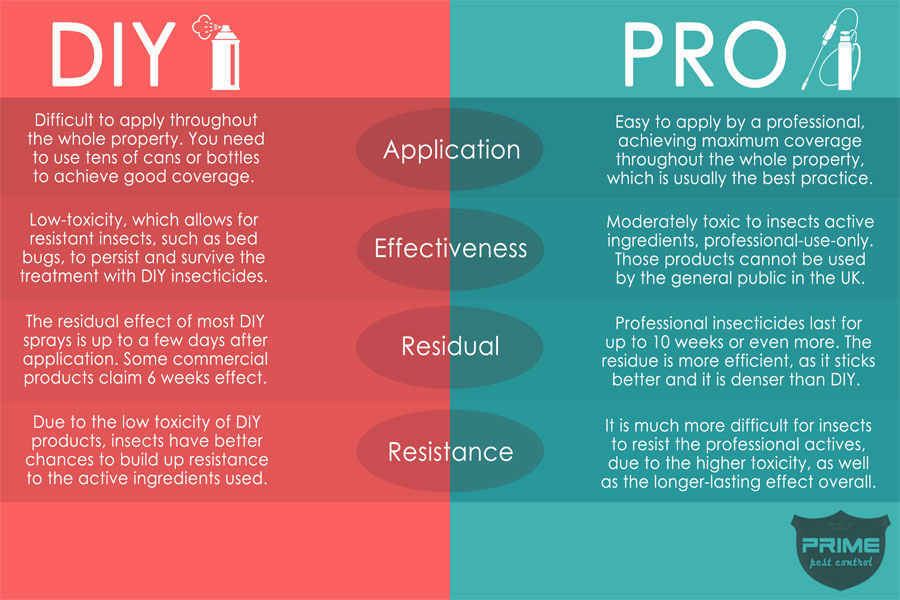
The commercial or DIY active ingredients in the UK and other countries with more advanced pest control legislation are available to the general public, but there are professional-use-only insecticides, which cannot be purchased without holding a professional qualification issued by the British Pest Control Association (BPCA) in the UK.
Do-it-yourself pest control products
With bed bugs in the majority of cases the commercial bed bug sprays and smoke bombs result in spreading this evolved insect throughout the property. Do-it-yourself methods and products encourage bed bugs to hide deeply in difficult to reach places, where there is not enough residue to completely poison them. Generally speaking, even the most efficient active ingredients applied through residual spray work slowly over time. In bed bug cases, the waiting period in-between professional treatments is usually 2-3 weeks, while the insects are getting slowly poisoned through their nervous system, after getting in contact with the residue. There are products that may work instantly when you spray directly on some pest insects, but others like bed bugs have evolved mechanisms to persist active ingredients or evade the treatment, hidden deeply in a crack or crevice.

Do-it-yourself methods can be harmful to humans if not handled professionally due to not wearing the correct PPE, exposing you through inhalation, skin contact or via ingestion.
Professional-use-only pest control products
The professional pesticides in general are more toxic to the pests, compared to the toxicity of commercial products. Their efficiency is greater due to the level of toxicity but also the active ingredients are different. They are 130x more effective with the same active ingredient (Cypermethrin).
Professional-use-only actives achieve a quicker knockdown effect, while preventing reproduction, eggs hatching and moulting with insect growth regulators (IGRs). The professional equipment in combination with those advanced insecticides in the hands of an experienced and thorough technician is by far more superior in comparison to the DIY methods. The application process is much more thorough, the residual effect and the longevity of the professional activities are greater.
Author: Bed Bug Hunters & Prime Pest Control team
May 2022
Entomophobia (Insectophobia)
Entomophobia, also known as insectophobia is the persistent fear of insects which can cause emotional and physical distress. Some of the most common feared insects are spiders (Arachnophobia), wasps and bees, cockroaches, crickets, mosquitoes and bed bugs.
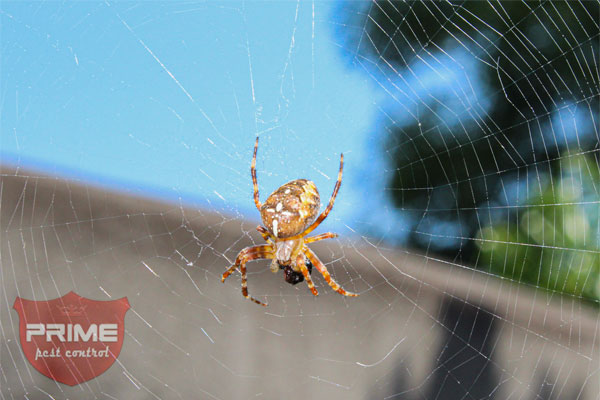
The fear of insects or specific bugs can be caused by lack of interaction with nature and exposure to insects, or the total opposite where one has a traumatic experience with encountering an insect in the past. Our experiences create a knowledge base in our mind which helps guide our future behaviour when in similar situations. You don’t always need to have first-hand experience as observational learning is just as important. Imagine speaking to a friend whose house was manifested with bed bugs and due to the bites they developed allergic reactions and experienced persistent itching. Hearing your friends’ experience, and seeing the marks on their skin can create mild anxiety and the fear of bed bugs when in fact you have never experienced such a scenario.
The persistent fear of insects can have detrimental effects on daily habits and social life. Anxious thoughts of being bitten can be enough to prevent you from going outdoors and creating a generalised anxiety due to the thought of encountering an insect. Irrational belief and the idea of being exposed to an insect is enough to generate unrealistic fear. Knowing that most bugs don’t pose imminent danger isn’t enough to remain calm.

Physical symptoms
Most common symptoms of insectophobia include:
Coping with entomophobia
Speaking about emotional distress and discomfort can be very difficult due to the negative stigma around mental health or simply feeling alone and helpless. There are online resources, self help materials and guides to professional support if you feel like your fears are causing you discomfort. Fearing the unknown is normal and that’s why our experts are here to attack insects in your home or office, as well as sharing knowledge and expertise by providing you with information about different insects that make the hair at the back of your neck stand up. If you wish to speak to one of our experts, please contact us.
October 2020
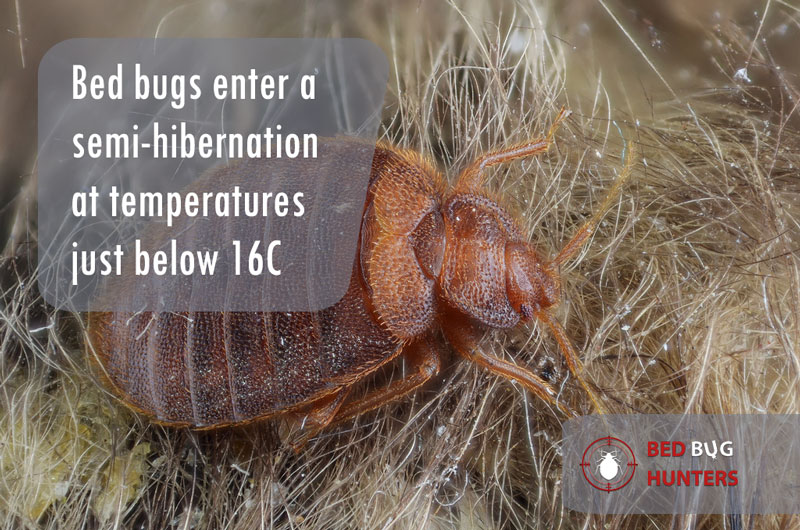
Shift in bed bugs’ behaviour amid the 2020 lockdown in the UK
Bed bugs’ behavioural change
Since the lockdown measures took place in the UK, many people have considerably reduced their travels for pleasure and work. Not to mention that some people are on a tight budget or may be even restricted from travelling. This year, for the first time in the past decade, we have noticed a significant change in bed bugs’ behaviour. In the past 10 years more than 80% of all the new bed bug cases were reported to us by people that have recently returned from a trip abroad.
This summer (2020), we noticed something rather unusual that immediately caught our attention. More than 70% of all the newly started bed bug infestations were reported by people that have only been using public transport, while the rest 30% of the people had been travelling, sleeping over in hotels or other shared accommodations. That means that bed bugs are spreading locally more often now, as well as through public transport. Moreover, this summer we had few customers that had brought bed bugs to their properties after getting bitten at the beach, on the South and East coast of the UK.

Tips to prevent bed bugs
- Get familiar with the signs of the problem
- Inspect your bed frame on a regular basis
- Raise awareness with your family and friends
- Inspect your bed in any shared accommodation
- Wash your clothes and inspect your luggage after travelling
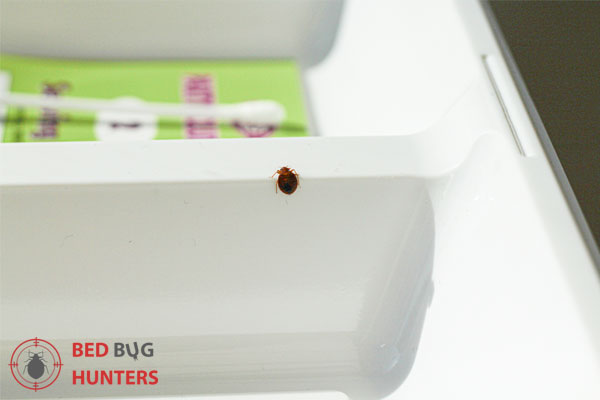
How do they spread and detect us?
While it is true that bed bugs do not transmit any harmful disease, they are one of the most disturbing pest insects in our urban environment. There are many ways that we introduce them in our properties, as they do not usually spread from one property to another. They migrate from outside very rarely, although we have seen such cases. Sometimes it is a mattress left outside or a piece of furniture that may be heavily infested, leading to a spread of the bed bugs inside the neighbouring properties.
Otherwise, bed bugs spread with luggage in more than 90% of the cases. Once introduced in the property, the bloodsuckers hide really well in gaps, cracks and crevices of bed frames and furniture mostly, detecting our presence by CO2, odour and heat. They would follow us anywhere in the property to get a bite and typically do not hibernate in the presence of people. Another interesting fact that should be considered is that 20% of all people do not react to bed bug bites.
Author:
Blago Manov
Managing Director of
Bed Bug Hunters & Prime Pest Control
October 2019

Bed bugs, tenants and landlords in the UK
Professional bed bug assessment and report can help in disputes
The presence of bed bugs in rented accommodation in the United Kingdom is not covered by a specific piece of pest legislation. Since bed bugs do not spread any harmful diseases, they are merely considered to be a nuisance pest.
However, in infested rental accommodation there is often dispute as to who should pay for professional extermination of the bugs.
By hiring a pest controller or bed bug expert accredited to the British Pest Control Association, (BPCA), you may however be able to prove who is responsible for the infestation and therefore has financial liability.
A written report from the initial inspection and risk assessment may act as proof of responsibility and help to prove your case in Court if you go that far. Whether treatment is the responsibility of the Landlord or the Tenant the local Council is another Authority that may serve an enforcement letter – in circumstances where the liable person does not want to take responsibility for the matter.
By professionally assessing the level of bed bug infestation, the source location and possible spread of the insect and the number of nests and eggs present, we can tell with very high levels of probability how old and infestation is. This is the key factor from the assessment, which usually clarifies the whole situation and determines the responsible party.

So, under what circumstances would either the landlord or tenant be held responsible for treatment?
-
Landlord’s responsibility
The landlord or agency managing the property may be required to cover the expense of bed bug treatment in the case that the accredited pest control provider finds out that the tenant has moved into a property that is already infested.
If we assess an average to high level of bed bug infestation, this would indicate that the problem has been there for at least 2-3 months. This is evidenced by the slower reproductive cycle of bed bugs when compared with other insects. In a case whereby the tenant has just recently moved in, it is clear that the bed bug problem was pre-existing. It would therefore be difficult for a landlord to claim that the new tenant brought the infestation.
-
Tenant’s responsibility
In those cases where tenants have been living in a property for some time and then they report a bed bug issue, most likely they have introduced the bed bugs themselves, even if not directly. Bed bugs can be introduced after travelling or guests visiting the property, in both cases unknowingly bringing bed bugs in with their luggage.
An inspection then would normally assess a fairly new and low-level infestation. This is when the landlord may refuse to take responsibility and the tenants may have to pay or share the expense of the treatment. The infested bedroom where we find the main source of bed bugs is where the problem initially started; this too may indicate the source.
-
Other bed bug infestation case scenarios
There are rare instances where a heavily infested mattress or a piece of furniture is left carelessly near the front doors of a neighbouring property, leading to the spread of the bugs. If this is properly assessed and evidence is collected, the person who has left the infested items may be held responsible for the treatment. Passage of bugs through the piping leading from one property to another is also possible but rare and the risk of bed bug introduction this way is relatively low.
Our advice to tenants and landlords is to act promptly when they encounter a bed bug issue in their property and hire a professional to inspect and risk assess the situation.

DIY bed bug sprays and smoke bombs fail in 90% of the cases
We do not recommend DIY treatments using retail bed bug sprays or smoke bombs, as these methods often result in the spreading of the pests throughout the property. The bugs literally ‘run away’ from ineffective treatments. Poor DIY treatment may also lead to the building up resistance to insecticides, thus making it very difficult even for the most experienced specialists to cope afterwards.
Every case is different, and the complete extermination of the bed bugs depends on many factors. The best practice with this insect is always to treat the whole property, which is extremely difficult to achieve with a DIY method. The active ingredients in ‘professional use only’ insecticides are far more efficient, especially when combined with integrated heat methods, such as dry steam treatment. For more information and detailed assessments, and advice over the phone, our customer service is available 24/7.
Author:
Blago Manov
Managing Director of
Bed Bug Hunters & Prime Pest Control
Edited by:
Peter M. Cherry
BSc. (Hons) Biology
Director. Pests Birds and Bugs Ltd.
February 2019
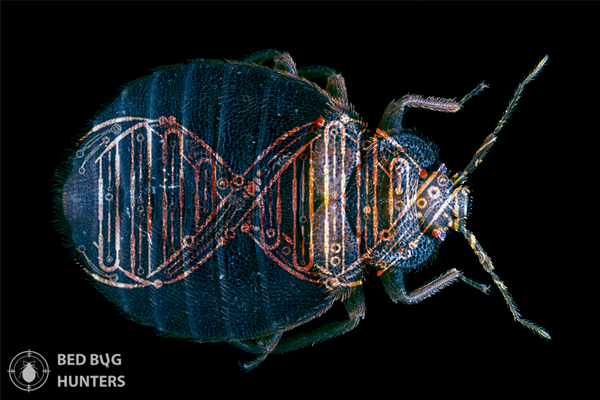
What triggered the most recent evolution of bed bugs?
Bed bug evolution timeline and history
The modern bed bug evolved from flying insects similar to the mosquito. This was most likely an adaptation to changes in the environment, called an adaptive radiation. Scientists have found fossils of bed bugs dating back to 1500 BC, and they were well-known and documented in ancient Egypt and across the Roman Empire. Indeed, even Aristotle mentioned them in ancient Greece some three hundred and fifty years BC.
Bed bugs have been a major topic in the media since their most recent evolution and significant resurgence in the last few years. Lots of people have probably read already that they have evolved unique mechanisms to resist even the most advanced active ingredients used by professional pest controllers.
DDT was sprayed on people, quite literally

These blood-feeding insects have recombined markers in their DNA structure to develop quicker metabolisms, thicker outer shells, and can enter states of full and semi-hibernation, allowing them to survive in certain conditions even when poisoned. Their senses have also improved making it possible for them to detect certain body odours and recognise our luggage, which is now the main reason for the introduction of bed bugs at our properties, arriving home with us after a holiday.
During the 1940’s and the 50’s, before the evolution was triggered, bed bugs were successfully treated and nearly vanished globally, thanks to the widespread use of the most common insecticide back then – the infamous use of DDT. This pesticide took a vital role in tackling various insect related issues across the world but it had a negative impact on the environment and decimated beneficial insects such as the pollinators, leading to the global banning of DDT in the 1970’s.
In the past six to seven years we have been steadily researching and gathering data. We have gleaned this from bed bug cases, pest control business owners abroad and people from various backgrounds and places internationally. We have concentrated on data regarding the history of DDT and the outbreaks of bed bugs in the past. Having successfully run Bed Bug Hunters for quite some time now, our director Blago Manov has come to a conclusion as to the trigger for the recent evolution of bed bugs.
Our take on the most recent bed bug evolution
Our hypothesis is that bed bugs did not evolve on the basis of building up resistance to the DDT by recombining their DNA structure. There is evidence of a more comprehensive evolutionary process, since bed bugs evolved not just one but several defence mechanisms and improved as a species. Bed bugs evolved due to the mass extinction threat during the 1940’s and 1950’s and the fact the they were nearly completely eradicated. Most likely, this triggered the change in the biological algorithm or ‘software’, which is a goal-oriented process of initiating intelligent design changes. This helps to transform the physical body and improve its functions. The process also depends on input from the environment, which must be processed successfully by the biological ‘software’ for the evolutionary process to succeed.
That means that bed bugs most probably evolved most around the 1960’s but it took some time for these evolutions, or mutations if you prefer, to reach a stable state. We believe that the evolved bed bugs coexisted with the old bed bugs for some time. The current outbreak, 3-4 decades later is mainly because of the steady surge in the number of people travelling abroad for business and leisure.
Insect’s brain is bigger than artificial intelligence (AI)
If we compare the evolution process and insect intelligence with the Artificial Intelligence, (AI), that we are developing now, the insect brain is much smarter than machine intelligence. Currently, scientists are researching ways to improve the machine learning process, while studying the insect brain structure and functionalities. Insect intelligence is worth billions of years of evolution and AI could only learn from mother nature. In the future we will probably see conscious robots and intelligent machines optimised by the brain patterns of insects studied in the laboratory.
Hopefully the study of the incredible efficiency of the insect brain will serve our society well, helping us to preserve the flora and fauna of our world increasingly well.
Author:
Blago Manov
Managing Director of
Bed Bug Hunters & Prime Pest Control
Edited by:
Peter M. Cherry
BSc. (Hons) Biology
Director. Pests Birds and Bugs Ltd.
January 2017
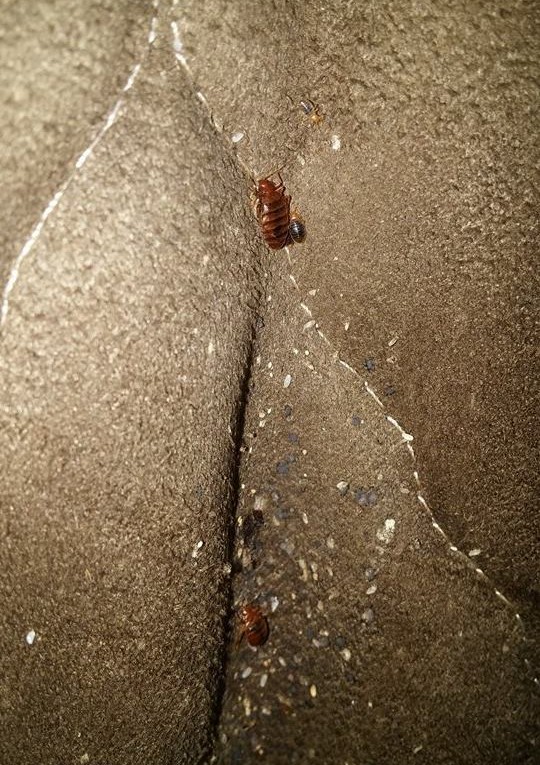
Bed Bugs and Cold Weather
Bed bugs are influenced by the weather conditions
Over the years of receiving daily call-outs for bed bug cases in London, we have noticed that bed bugs are not just influenced by the temperature conditions. They also seem to be less active in rainy and stormy days, when the weather is generally bad. Like with most insects, bed bug’s behaviour and life cycle are both dependent on the weather conditions. We have noticed the following patterns of the insect’s behaviour during days with bad weather, from over a decade of researching and collecting data:
- Reduced biting patterns over colder periods and the colder months in general
- Reduced occurrence of the pest – the occasions when you spot the little bugs crawling are considerably fewer compared to the warmer periods and warmers seasons of the year
- Reduced reproducibility of the pest – the rate of egg hatching slows down and it may even take triple of the temperatures are very low

These patterns have a very logical explanation. Bed bugs are insects that prefer warmer environments. Their bodies are accustomed to developing and surviving at comfortable temperatures and when the winter comes and the temperatures drop, their activity decreases quite significantly sometimes. Temperatures lower than 15 Celsius are considered borderline for the development of the pest. Below 15 C the bed bugs reduce the number of feedings and they start coming out to bite less frequently. Their eggs do not hatch within the typical period of 10 to 14/16 days and it may take up to 45 days for them to hatch.
This explains one of the reasons why it is a more difficult to confirm that a bed bug infestation has been completely eradicated during the colder months. Bed bugs could have also entered a full or semi hibernation, allowing them to survive even without a blood feed for more than 6 months. Typically, when the weather is bad or the conditions are cold in the property, bed bugs are coming out to bite once or twice every 3 weeks or more, compared to a bite once every 3/4 days.
In case that you may be worried about having bed bugs or you are receiving strange bites, you can call our friendly customer care team and request information or ask any bed bug related question on your mind.
Authors: Bed Bug Hunters technicians
April 2015
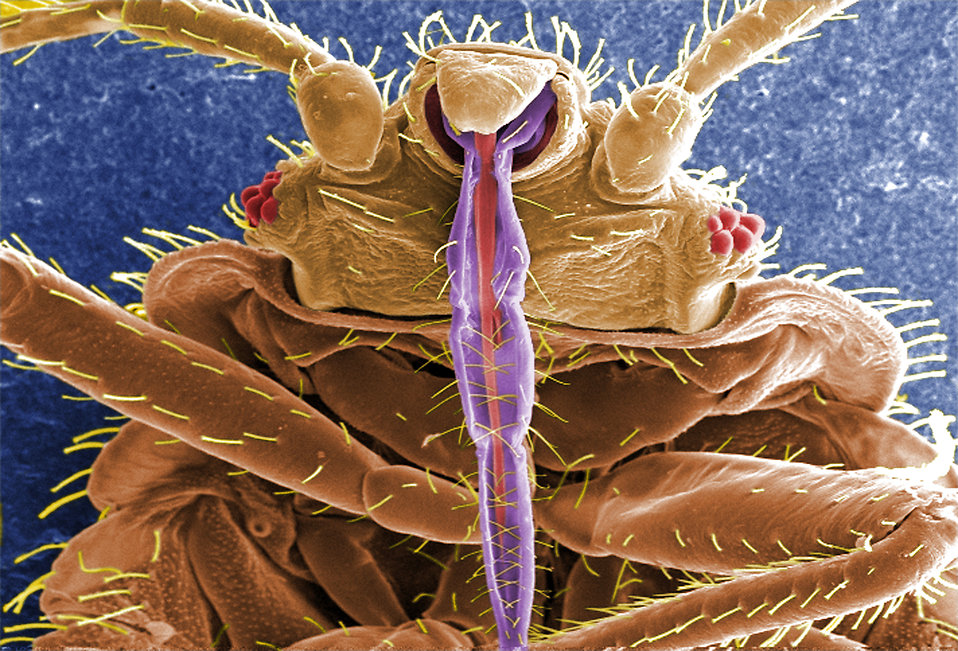
Do bed bug bites transmit any diseases?
Researches about bed bugs
With the increase of the bed bug infestations in metropolitan cities in the recent years, the amount of affected people has increased as well. As we have already discussed in a previous blog post, some people react to those bites in various ways and other people do not. However, regardless of this, they are all being bitten by the bed bugs.
Here comes a very common question from our customers, whether the bed bugs bites can cause any harm to the human health. This has been a topic, widely discussed in the past years, and different tests have been carried out.
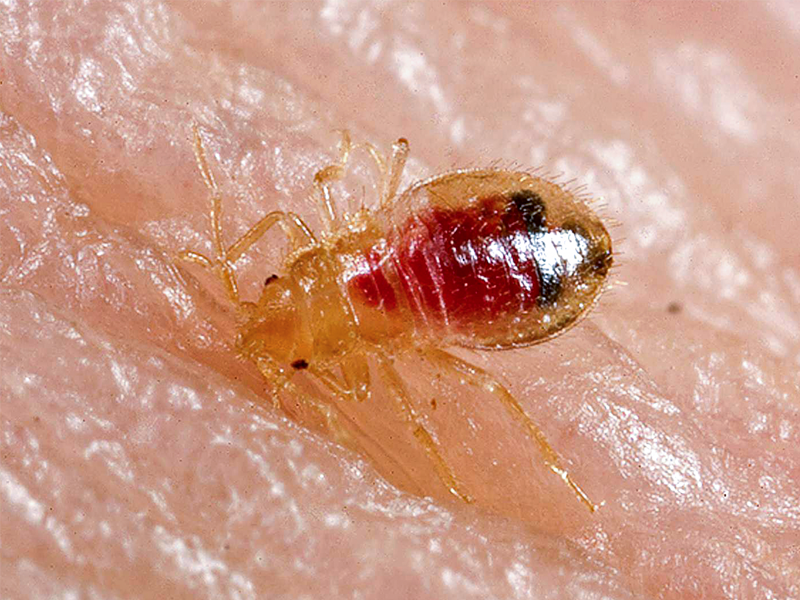
Recently, there was an article from a joint research between the Universidad Peruana Cayetano Heredia in Peru, Johns Hopkins Bloomberg School of Public Health, and University of Pennsylvania School of Medicine in the USA, which found out that bed bugs can actually transmit Chagas disease (Trypanozoma cruzi). They presented their study with the evidence provided, that the bed bugs can carry and transmit the disease through their feces (1). However, as it is the excrements of the bed bugs that can transmit the disease to people, it is highly dependent on the individual cases, as not all bed bugs defecate directly after feeding, meaning that not all bed bugs will present a danger to the human health.
There have been hypothesis that bed bugs can be vectors for other blood-borne pathogens, such as hepatitis B and C, HIV, MRSA, etc.., as the bugs are feeding on blood, but there has been no evidence found, that they can actually, transmit those diseases to people (2).
On the contrary, more research is currently being done also in the area of using bed bugs for gene-engineering purposes. The bugs can get infected with the AIDS virus from their hosts but it would eventually die, according to a South African study, mentioned by the Gawker.com blog.
All different experiments done in the area with bed bugs state that very little is found, so that it could be confirmed that bed bugs cannot transmit diseases directly to people, no matter that they feed on blood from various people, especially in areas with poor hygiene and personal care habits. There is still no evidence found that they transmit any of the above-mentioned diseases (3), except for the Chagas disease. However, according all journal articles, it is of vital importance to take care of the infestations and take into consideration the limitations present, e.g. resistance to pesticides and health precautions of people not willing to have their mattresses sprayed.
Author: Blago Manov – Managing Director of Bed Bug Hunters & Prime Pest Control
References:
(1) Salazar, R., Castillo-Neyra, R., Tustin, A. W., Borrini-Mayorí, K., Náquira, C, Levy, M. Z., Am J Trop Med Hyg 14-0483; Published online November 17, 2014, Bed Bugs (Cimex lectularius) as Vectors of Trypanosoma cruzi
(2) CDC, Volume 17, Number 6—June 2011, Bedbugs as Vectors for Drug-Resistant Bacteria
(3) Goddard J1, deShazo R., JAMA. 2009 Apr 1;301(13):1358-66. doi: 10.1001/jama.2009.405.
Bed bugs (Cimex lectularius) and clinical consequences of their bites.
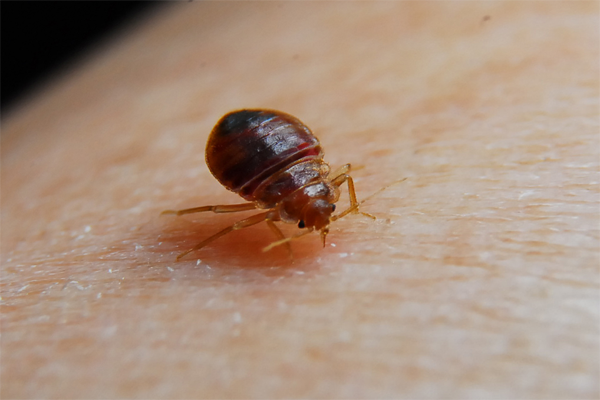
Bed bug bites
Some people do not react to bed bug bites
Having discussed and thoroughly explained the various ways of transmitting a bed bug infestation, the ways to recognise and locate the bed bugs, we are now about to discuss the bed bug bites and the different ways people react to them, as they may be sometimes the key to increasing the infestation.
As previously said, bed bugs are mainly nocturnal pests. They sense the amount of carbon dioxide exhaled by their hosts, as well as their body odours, and come out to feed when it is least likely that the hosts will notice them – during their sleep. Here comes the statistics, 20% of the people do not have a reaction to the bites, which means that they would not realize that they had been bitten (Doggett, 2009). This is how an infestation may increase and the host would not be aware of it until the signs are more obvious and in multiple places. As a consequence, the complete extermination of the pest would be more difficult.
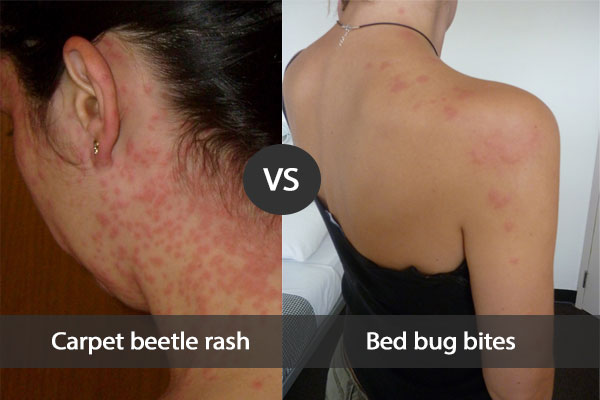
Majority of people react to the bed bug bites by having spots, similar to the ones that they would have if bitten by other pests. Often the reaction to the bed bug bite may occur up to 15 hours after the actual bite. This is what makes it difficult sometimes even for the GP to find exactly what the cause of the spots may be (Doggett, 2009). These spots do not require any treatment.
There are also bed bug bites that do not only cause itchy spots. There may be symptoms like rash all over the whole body, spreading redness around the site of the bed bug bite, chest pain, shortness of breath, wheezing, dizziness, fever, lip or tongue swelling. If this is the case, then you must contact a health-care professional or visit the nearest emergency department.
Identifying an infestation as early as possible is vital for the complete eradication of an infestation. It would not only save you money from the fewer amount of treatments required, but it would also save you from the discomfort of the bites and all other unpleasant consequences that come with a bed bug infestation. Our company offers a range of premium quality services, tailored specifically to our customers’ needs, so that they can get the best results as soon as possible.
If you suspect that you might have a bed bug infestation, please do not hesitate to contact us. We will ask you some questions to find out more about the situation and potentially arrange a thorough inspection to find out if an infestation is present.
References:
Doggett, S. L.. (2009). Bed Bugs, What the GP Needs to Know.Australian Family Physician. 31 (11), 880-884.
Author:
Blago Manov – Managing Director of Bed Bug Hunters & Prime Pest Control
February 2015

Why bed bugs spread around with such ease
Bed bugs are able to detect our luggage
Bed bugs have become a popular topic nowadays. With the globalisation of the world and the increasing amount of people travelling, it is not just the usual preparations that have to be taken care of when travelling these days.
In our practice, it is quite often that we receive calls from anxious customers that tell us about the nuisance bed bugs are causing them (e.g. sleepless nights, constant itching, swelling in cases of allergic reactions to bed bug bites, etc.). During our conversations we are trying to figure out what the reasons for introduction of the infestation might be. Most often than not, it is a recent travel that had taken place. Whether it is for work or holidays, a countryside getaway, friends or relatives staying over or a night out of town, you may end up bringing back more than you had taken with you initially.
The reason for this post is the increased number of customers telling us that when they opened their luggage at home after a travel they witnessed a few or several bed bugs crawling out of their suitcases. This made us wonder how the bed bugs choose to go inside the luggage and not anywhere else in the room and what makes them go there. This has its reasons and explanations.
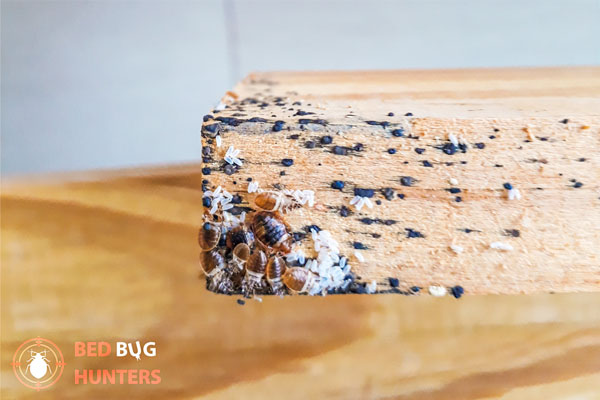
A research has been done by Harraca et al. using a special software for video tracking and analysis of animal and insect behaviour, movement and activity. Bed bugs can detect certain body odours through the sensilla on their antennae. Explored by the team are their behavioural reactions to the aldehydes forming the human odour (heptanal, octanal, nonanal, and decanal and the ketone sulcatone). The result of the analysis concludes that the bed bugs are not strongly attracted by the human odours but they are capable of recognising them. This is related to the fact that they do not need to sense their hosts from long distance like the mosquitoes, for instance. They can also sense the CO2 and the moisture around people, which help them to locate their hosts better.
However, the fact that the bed bugs are able to detect human odour allows us for the assumption that it is the main reason for them to locate the luggage bags, where we keep our clothes during travels and where the human odours are not as strong as when they are released directly from our bodies, and this allows them to settle in between the clothes, where we can easily take them with us back to our homes.
This results in a new infestation started in a new home. The bed bugs need a few days to settle down in a new place and once they feed they may need to feed again in 3-4 days. This is the reason some people think initially that their bites are from mosquitoes, rather than bed bugs. Slowly, the pesky pests start leaving the physical signs, which are a good way to identify the infestation – dark rusty stains on the sheets, little black flecks around the skirting of the walls and around bed frame, as well as around the seams of the mattresses.
Bed bug advice
Once an infestation is identified, it is a good idea to clean the whole premises of all sorts of piled boxes and storage under the beds and around the corners of the rooms, wash all bedding at minimum 60 Celsius and try to keep he property as clean as possible, vacuum cleaning on a regular basis everywhere one could reach. Sealing and disposing of the contents of the vacuum cleaner afterwards is strongly recommended as any trapped bed bugs may try to make their way out again.
If you feel that you cannot deal with the infestation yourself, it would be best to call a professional extermination service provider, who would be able to solve your problem using professional methods and advice.
Author: Blago Manov – Managing Director of Bed Bug Hunters & Prime Pest Control
References:
Harraca, V.; Ryne, C.; Birgersson, G.; Ignell, R. (2012). Smelling your way to food: can bed bugs use our odour? The journal of experimental biology, 215, 623-629.
Harraca, V.; Ignell, R.; Löfstedt, C.;Ryne, C. (2010). Characterization of the antennal olfactory system of the bed bug (Cimex lectularius). Chemical senses, 35, 195-204.
June 2014

The bed bug evolution
Bed bugs evolved and developed unique adaptive defence mechanisms to resist pyrethroid insecticides
Researchers from the University of Kentucky have discovered 14 molecular markers in bed bug genes commonly associated with resistance to pyrethroid, one of the most popular pesticides used for bed bugs eradication. In their study published in the journal Scientific Reports, the scientists reported how they compared genes from pyrethroid resistant bed bugs found in the Los Angeles area, to those from other areas in the country that had not yet developed a resistance. As a result the bed bugs that didn’t have these markers in their DNA were much more vulnerable to a chemical treatment.

Bed bugs have been recently in the focus of pest control specialists as outbreaks have occurred in mega cities throughout the world. These bugs are parasitic insects that feed on warm-blooded animals, but mostly on pets and humans in urban environment. For the past few years certain chemical methods for eradication have become less useful as the most popular pesticides have become less efficient. This is a result of bed bugs combining specific fragments of genes (molecular markers), thus, developing various types of resistances to the most commonly used pesticides. Yet scientifically proven, this evolution of bed bugs has contributed greatly to the surge of urban bed bug infestations and earning them a reputation of one of the most challenging pests to eradicate.
It is reported by the researchers from Kentucky that the newly found 14 markers in bed bug DNA and the defense mechanisms they developed mostly involve the bugs’ outer shell, which serves as an armor, preventing the toxin from reaching the inner body. The evolution of bed bugs and their ability to combine fragments of genes in their DNA grant them outer shell properties such as shell thickness, enzyme levels involved in metabolizing pesticides and others.
The researchers also observed that the markers introduced two categories of defense: those responsible for neutralizing the pesticide before it could reach sensitive areas, and those that physically prevented the chemical from penetrating the body. Considering all these facts, the increasing number of people travelling around the globe is contributing to a greater danger of the occurrence of bed bug infestations.
Author: Blago Manov – Managing Director of Bed Bug Hunters & Prime Pest Control

